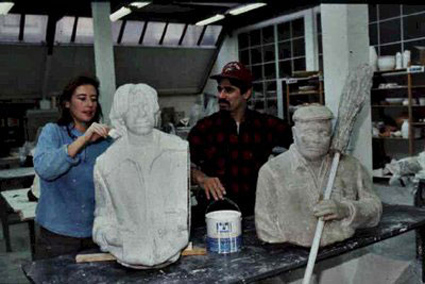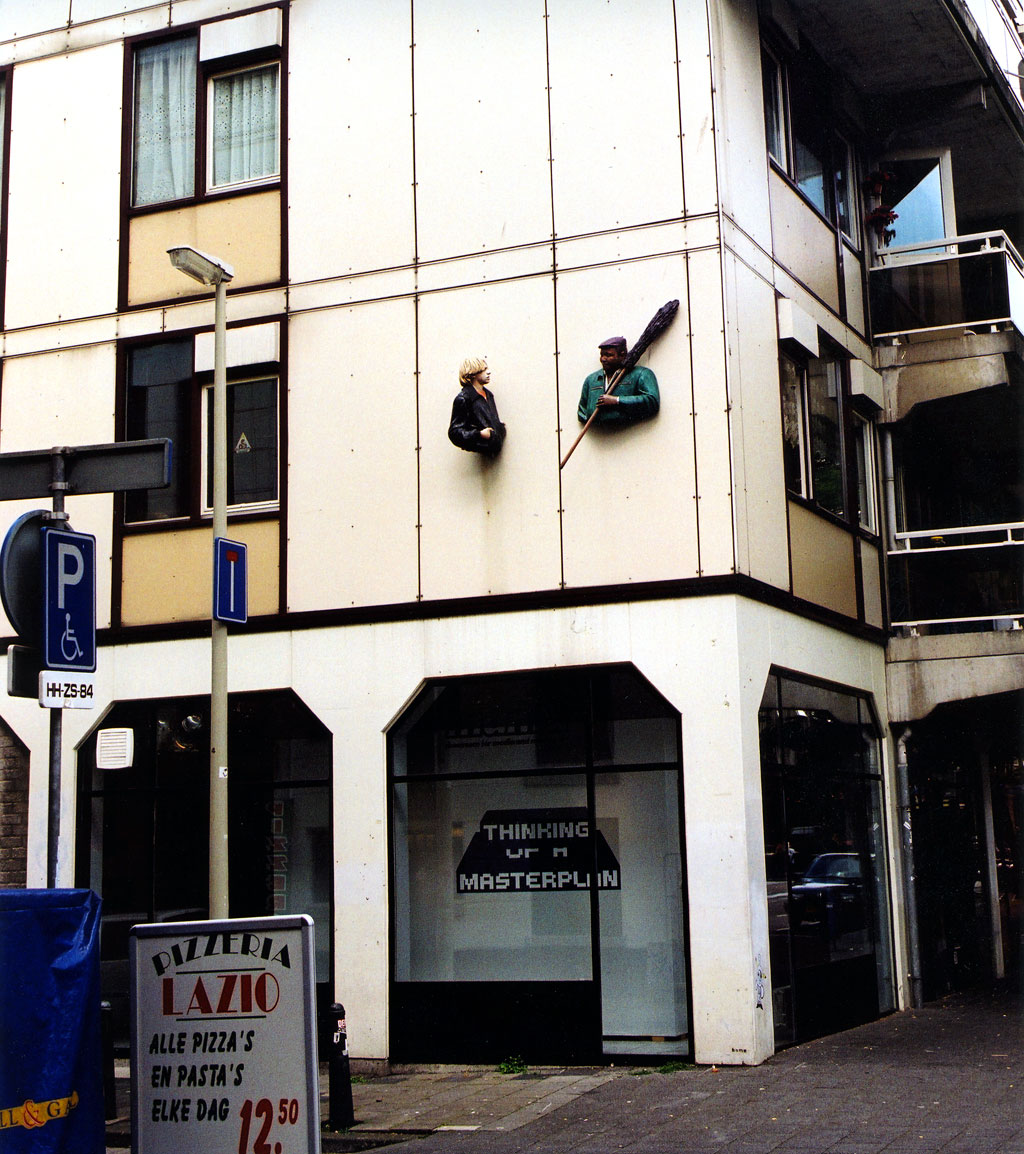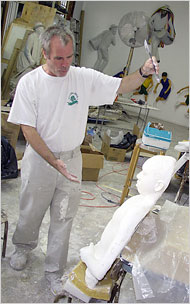The Artwork
In the Kromme Elleboog, a sidestreet of the Witte de Withstraat, the façade of a corner building is decorated with the portrait busts of two male figures. The sculptures were made by John Ahearn, with the assistance of Rigoberto Torres. The men depicted look at one another. One is rather young, white and dressed in a leather jacket while the other is dark-skinned, wearing work overalls and holding a willow street-sweeping broom. The sculptures are extremely detailed, and not only is attention placed on the subjects’ appearances, but also on the anatomical shape and colour of their faces. The artists approximate reality as closely as possible; this is demonstrated by the way the figures are posed, and in the use of props and clothing.
The people who posed for the sculptures are two local residents, Mario and Antonio. Their heads and part of their torsos were cast in plaster. After that, lifelike polyester sculptures were crafted using the moulds, and these were then painted by Ahearn. The underlying idea of the two façade sculptures is that Ahearn felt it was important this time not to portray public figures such as famous naval heroes, scholars, poets, philanthropists, heads of state, administrators or politicians. This time, he wanted to immortalise ‘unknown’ people, the average person on the street. It’s not about stereotypes here, but individuals, the type of person you might see on any city street.
With his replicas of real people, Ahearn took art outside of the walls of a museum. This reflects his interest in taking on a new type of engagement, centring on the public and zooming in on social themes. By using two unknown people as models and exhibiting them in a lifelike manner in a public space, he aimed to reinforce their identities, thereby increasing the social cohesion in the neighbourhood.


